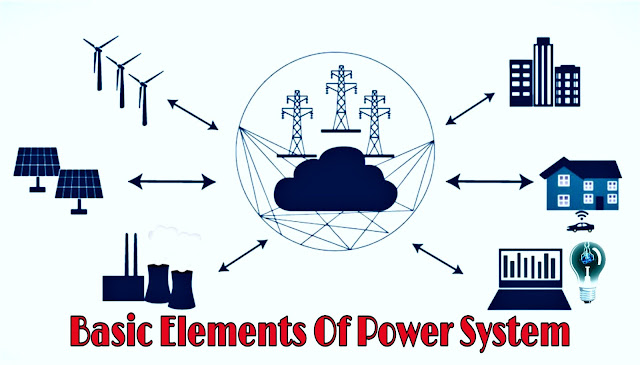Basic Elements of Power System | Electrical Power System Theory
Power system can be divided in to
three different parts :
(1) Generating station
(2) Load centre
(3) Link joining 1 and 2
Electric power is generated in generating station T1 includes the generator, prime mover and necessary equipments to run the prime mover, exciter, step up transformer, circuit breaker etc.
Load centre includes consumers which consume electric power such as factory, shops, water supply, hospitals, cinemas, domestic consumers etc.
Generating station and the load centre are connected through the transmission line, substation and distribution lines.
Modern power supply system is not as simple as described above. Especially the link joining the generating station and the load centre is complicated.
Single line diagram of power supply system is shown in below diagram:
Power is generated at voltage of around 11 kV. This voltage is stepped up to the voltage of transmission with the help of step up transformer.
Normally the voltage of transmission is 220 kV or 400 kV. Long distance transmission lines are run in different areas.
This is called high voltage transmission or primary transmission.There is receiving station at the end of each line.
In this,the voltage is normally stepped down From substation 66 kV lines are run in to different areas.This is called secondary
transmission.
Substation is kept at the end of each 66 kV line.
In substation 66 kV voltage is stepped down to 11 kV with the help of step down transformer.
High voltage consumers like factories, big industries are given supply using 11 kV feeders. This is called high voltage distribution or primary distribution.
Some 11 kV feeders are taken in to different areas.There is distribution transformer at
the end of each 11 kV feeder.
This transformer is installed on the pole.This transformer has voltage ratio of 11 kV/415 V.
Different 415 V distribution lines are run in different streets.
From these lines the L.T. domestic consumers are given either 3-phase supply or 1 phase supply. This is called low voltage or secondary distribution.
In addition the modern supply system is interconnected, so that if trouble arises in one
substation, the power can be fed from other substation.
Complications increase due to the interconnection but considering other advantages of interconnection, the complication has to be accepted to 66 kV.
May You like to Read this Article 👇👇
May You like to Read this Article 👇👇




Comments
Post a Comment